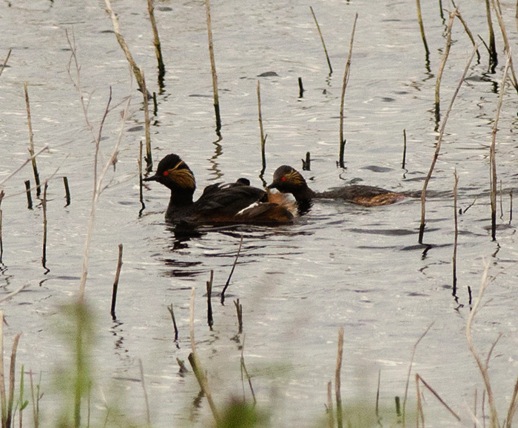In which, as the year comes to its end, our friends and collaborators look back and share their moments:
I was seen through this year, in both senses of the phrase, by books and birds.
The week I published an essay (in Archipelago 8) on the impossibility of modernising the woodcock, so that we might know it today as it was once known in Britain, I saw one wriggling, as it seemed, in flight over the dusk rooftops of deeply urban Bristol. Something plies along the twisting seconds of such encounters and the older you get the more they mean. This was the second urban woodcock of my life, the first got up from my feet as I opened the front door of a house in central Cambridge thirty years ago. I remember the shock more than the bird, the fluster not the feathers, the rifled air.
This year’s old books: Coleridge’s Notebooks (Oxford University Press have a marvellous paperback selection edited – very helpfully – by Seamus Perry), Anna Karenina, where among much else a dog talks about a woodcock flying towards it (this time in the Maude’s translation, while waiting for Rosamund Bartlett’s, which I hope will give me the next time’s). New books: Jason Orton and Ken Worpole’s The New English Landscape (occasioning a healthy feeling of discomfit for any nature writer), Olivia Laing’s The Road to Echo Spring (recipes for drunkenness and a magnetic account of its fallout), Richard Holmes’ ballooning history Falling Upwards (envy of the air and good reasons to stay put on the ground), Mark Cocker and David Tipling’s Birds and People (pretty much everything that I need forever). Not Yet Born books – all due soon: Patrick McGuinness’ Other People’s Countries, a sui generis yet somehow essential account of a childhood in a Belgian village, William Atkin’s darkly saturated history of the soggy backbone of England, The Moor, and Lavinia Greenlaw’s A Double Sorrow, heart-stopping poems made out of Chaucer’s Troilus and Criseyde.
Birds: the Cambridgeshire fen that I have written about (field one of Four Fields) was wet for the first time in decades and came alive with birds as if they were hatched from its peaty water. I watched from its edge as a pair of common cranes manoeuvred themselves, one on top of the other, in a slow-flapping lead-grey fuck. Close to their huge feet (the pied de grue, the fen’s pedigree) swam a pair of tiny black-necked grebes, in full summer rig: peat-black necks, red eyes, and a sheaf of ripe corn for mascara. Later, a shadow from the same wet as a reminder of our (mine at least) precarious grasp: I saw a duck that I fingered as a rare-ish species (a drake ferruginous) and declared it by webmail from the bank before realising my mistake (it was most likely a somewhat off version of an eclipse plumaged tufted). My news was broadcast and my underwhelming correction came too late, but there were things to learn from my shame. Birds and People, as the book says.
Tim Dee’s Four Fields was published this year and was most kindly looked after by Caught by the River in various ways. He is looking forward to more of the same next year, including a stint at the Port Eliot festival. Before then he is off to the desert of northern Sudan to start writing a book following Spring through Europe.
